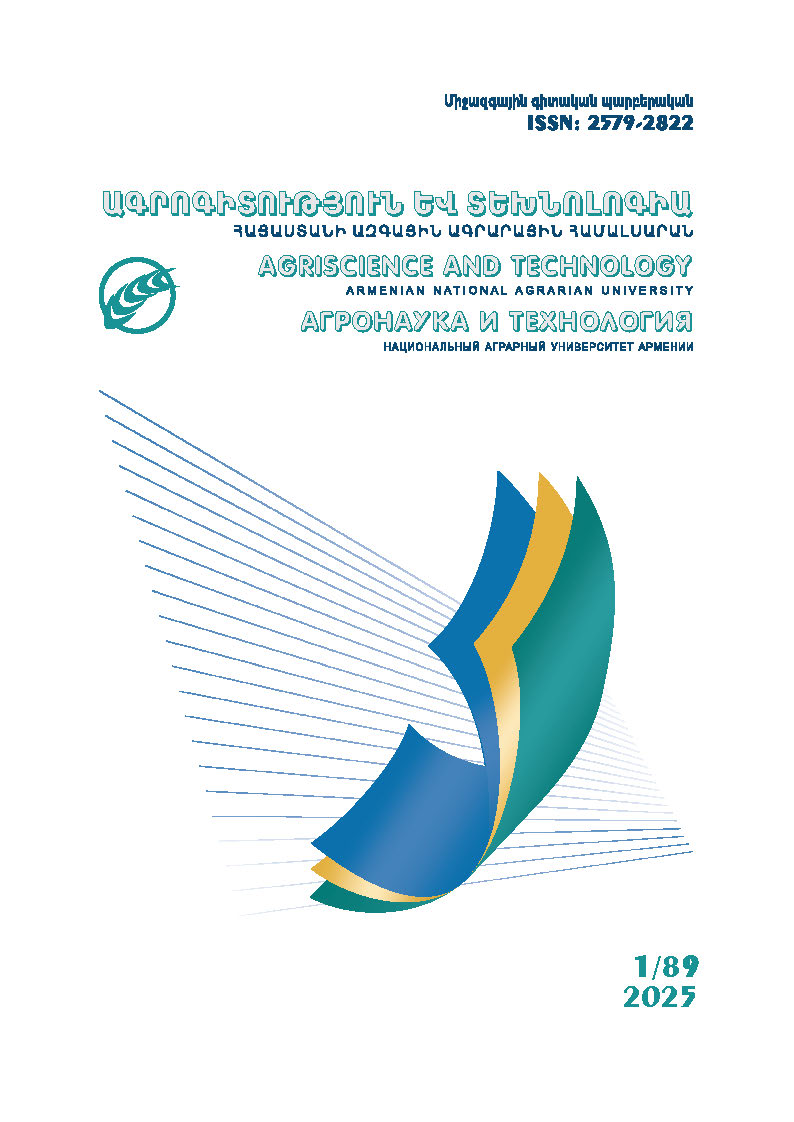Valuable Breeding Indicators in the Winter Grain Triticale Varieties Using Cluster Analysis
DOI:
https://doi.org/10.52276/25792822-2025.1-57Keywords:
cluster analysis, diseases, spike, triticale, yieldAbstract
Triticale, a hybrid obtained by crossing wheat (Triticum L.) and rye (Secale L.), was studied per its phenological observations and valuable breeding traits, including bushiness, plant height, ear length, grain completeness (assessment), vitreousness, resistance to lodging and fungal diseases, and the dates of earing and maturation. The study was conducted in the experimental field of the Dagestan Experimental Station, VIR. Eleven varieties of hexaploid (2n=42) triticale (X. Triticosecale Wittmack) from the collection of the All-Russian Institute of Plant Industry named after N.I. Vavilov were examined. These included varieties from the “State Register of Breeding Achievements”, the latest varieties from the world collection, as well as varieties developed at the Dagestan Experimental Station, VIR. Cluster analysis, a method of classification and hierarchical grouping, was used to divide the studied population into several groups called clusters. This approach allows breeders to plan and make more informed decisions for the development of breeding programs. By utilizing clustering, samples can be grouped based on the phenotypic expression of specific traits or trait combinations. The results of the cluster analysis are presented in a dendrogram. The degree of variation for each of the indicators was calculated using a coefficient of variation. Based on the clustering results, the studied samples were divided into two groups.
Downloads
Published
How to Cite
Issue
Section
License
Copyright (c) 2025 Lusine Suvaryan, Kishtily Kurkiev, Mina Gadzhimagomedova, Norik Mkrtchyan

This work is licensed under a Creative Commons Attribution-NonCommercial 4.0 International License.
Creative Commons Attribution-Non-Commercial (CC BY-NC). CC BY-NC allows users to copy and distribute the article, provided this is not done for commercial purposes. The users may adapt – remix, transform, and build upon the material giving appropriate credit, providing a link to the license. The full details of the license are available at https://creativecommons.org/licenses/by-nc/4.0/.





